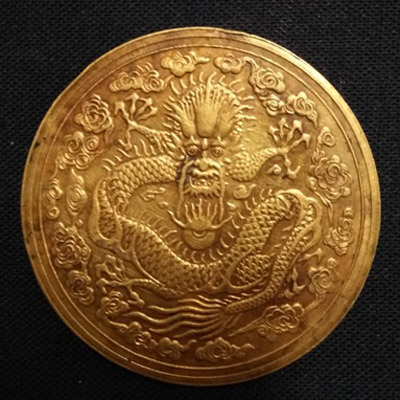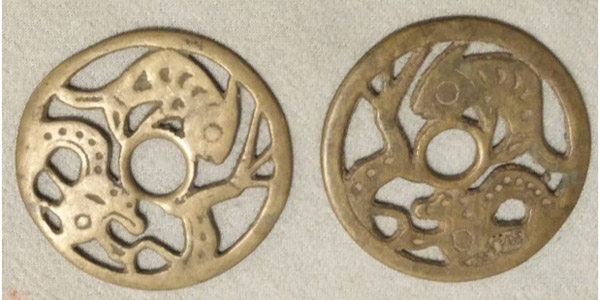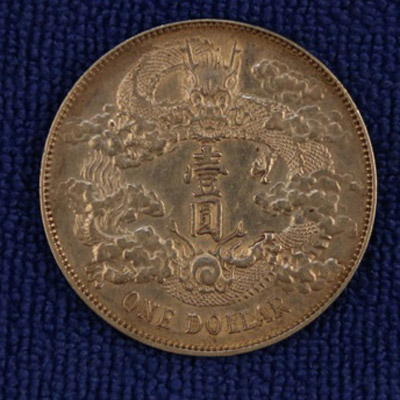Information
Exhibition details the depiction of dragon
New exhibition detailing the depiction of the creature in currency over the ages explores their transition from spiritual totem to national symbol. Wang Kaihao reports.
When asked where is the most common place to see images of Chinese dragons, most people would probably guess it was the Palace Museum in Beijing.
However, the answer is actually much more down-to-earth-on currency notes.
An exhibition at Beijing's Deshengmen Archery Tower that opened on Friday aims to give people the bigger picture of how dragons have been depicted on currency throughout Chinese history.
At Traveling Around the World: Chinese Dragons on Banknotes and Coins, currency exhibits have gone on display, demonstrating the origins of this animal deity, delving into its auspicious meanings through the ages, and showing the dragon grew to become ancient China's imperial symbol.
"Dragon are generally considered to be a spiritual totem for Chinese people," Song Zhenhong, deputy director of the Beijing administration of cultural heritage, said at the opening ceremony of the exhibition. "It has also been a crucial element in the design of the Chinese currency," she says.
According to Song, images of dragons have been a permanent theme in Chinese currency since the Han Dynasty (202 BC-220 AD).
"Currency requires a rigid format, but it also greatly reflects the characteristics of their time," Song explains. "Money has developed into the most prominent platform for promoting the culture surrounding the Chinese dragon."
She adds that banknotes and coins bearing Chinese dragons continued to reflect the diverse shifts in China's political, cultural and social environments over the centuries.
"During China's imperial years, dragon images were depicted in a more solemn manner when it came to representing the royal family," says Li Zhidong, curator of the exhibition and a board member of the Beijing Numismatic Society.
"However, when they were printed on bank notes, they began to reflect an interesting mixture of royal majesty and people's everyday lives."
Li says the use of dragon images on currency reached its peak in the late Qing Dynasty (1644-1911), and many exhibits are taken from this period.
In ancient China, a type of coin called yashengqian (money to suppress vicious spirits), was also used to convey good wishes in rituals rather than being used as a form of currency-and dragon images are found on these in abundance.
"Compared with the rigid format used in currency, we can see a much greater variety of dragon patterns and designs on these coins," Li explains. "They added new colors to Chinese numismatic culture and grew from depictions seen only in royal livery to later become a symbol for the country as a whole."
Consequently, the use of dragons has continued to be a common theme in currency long after the fall of the Chinese monarchy, and some of the exhibits are commemorative coins from contemporary times.
At the same time, the depiction of dragon has not just been limited to Chinese currency or the courtyards of the Forbidden City. Images of dragons also appeared frequently on foreign currency throughout ancient times, especially in neighboring countries influenced by Chinese culture like Vietnam and on the Korean Peninsula.
At the ongoing exhibition, Traveling Around the World: Chinese Dragons on Banknotes and Coins, currency exhibits are on display, showing the dragon grow to become ancient China's imperial symbol. [Photo provided to China Daily] |
Countries like Australia and Palau have also released commemorative coins to mark the most recent Year of the Dragon in 2012, and a special section for these has been set up at the exhibition.
"When you look at the use of dragon totems in currency through the ages, the exhibition actually reflects all the changes witnessed in Chinese society," Wang Peiwu, director of the Beijing Ancient Numismatic Exhibition Hall, says. "But now dragon has taken on a new meaning: It represents a revival of Chinese civilization in the modern world."
Contact the writer at wangkaihao@chinadaily.com.cn
If you go
9:30-4 pm, Mondays closed, through Jan 13. Beijing Ancient Numismatic Exhibition Hall, Deshengmen Archery Tower, 9 Deshengmen Dong Dajie (Avenue), Xicheng district, Beijing.
Category: English
News
Information
Key words:




